Abstract
Despite increased interest in dementia and the concomitant creation of dementia assessment centers, there has been a paucity of reports examining racial differences in the social and clinical presentation of dementia. Such information can enhance knowledge about dementia and assist in the planning of diagnostic centers located in areas with large minority populations. This study reviewed the charts of patients evaluated at a dementia assessment center in New York City. The sample comprised 102 white and 68 black patients. There were no racial differences in types of dementia nor reported length of illness. However, bivariate analysis revealed many significant differences between the groups in social, medical, and psychiatric variables. Most notably, a stepwise discriminant analysis identified seven variables--Medicaid recipient, gender, age, sleep disturbances, delusions of stealing, hypertension, and concentration--as correctly being able to classify 75% of cases. Racial differences in cognitive and behavioral symptoms may reflect the interaction of dementia with physical health, premorbid history, environment, or some basic difference in disease course.
Full text
PDF
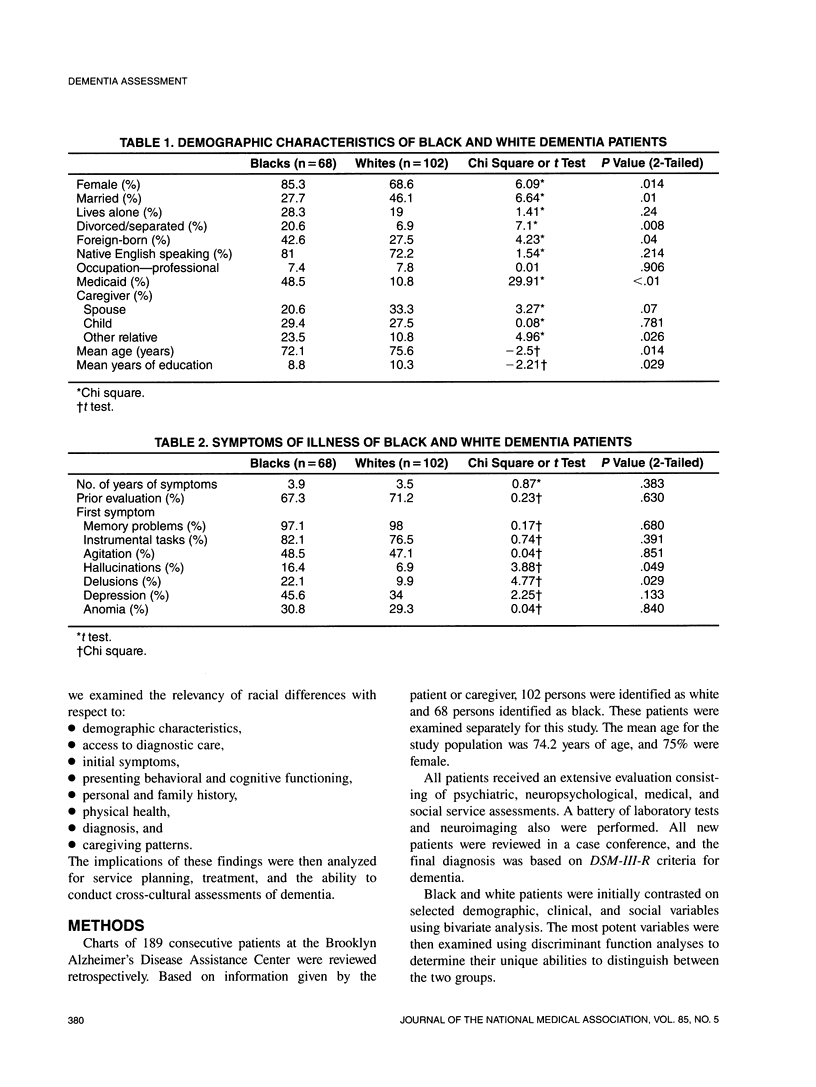
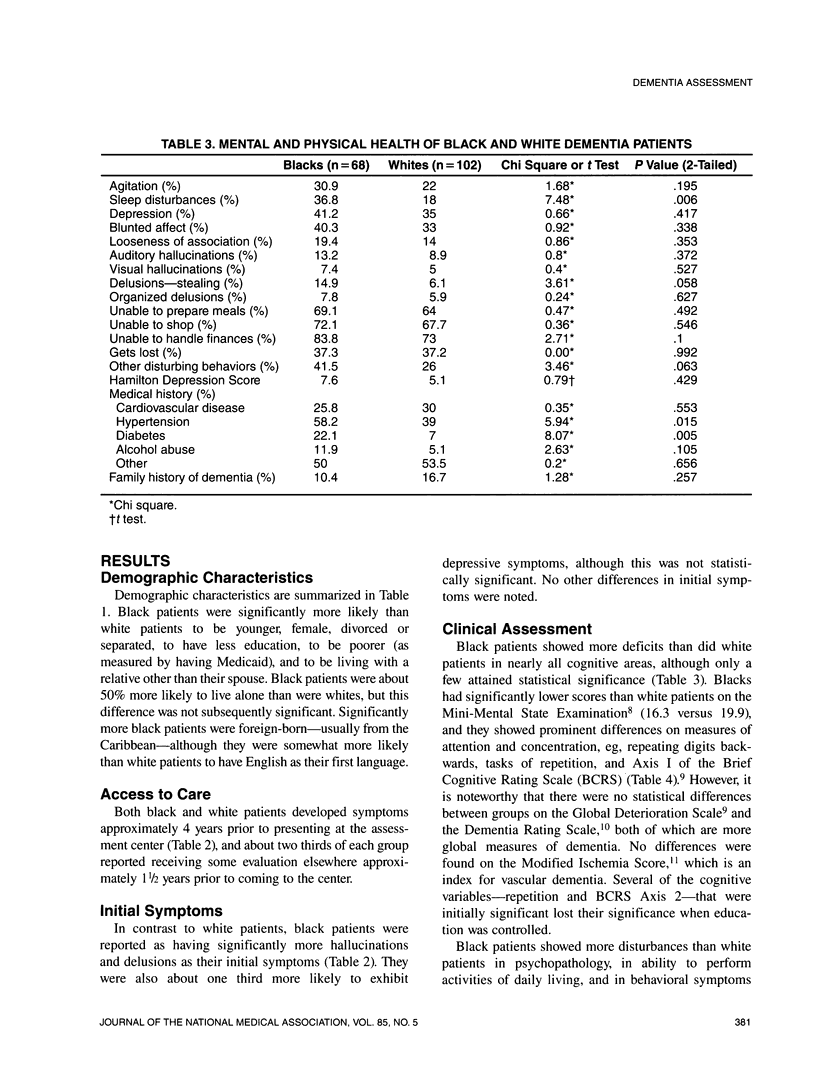
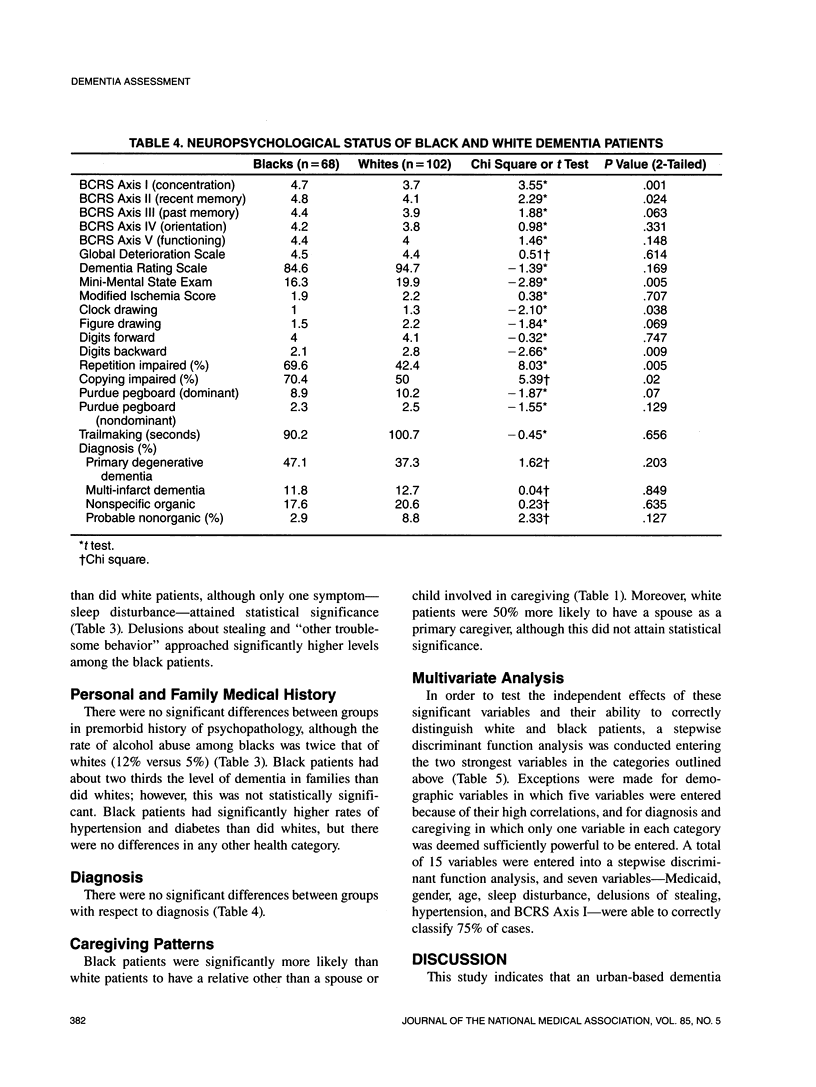
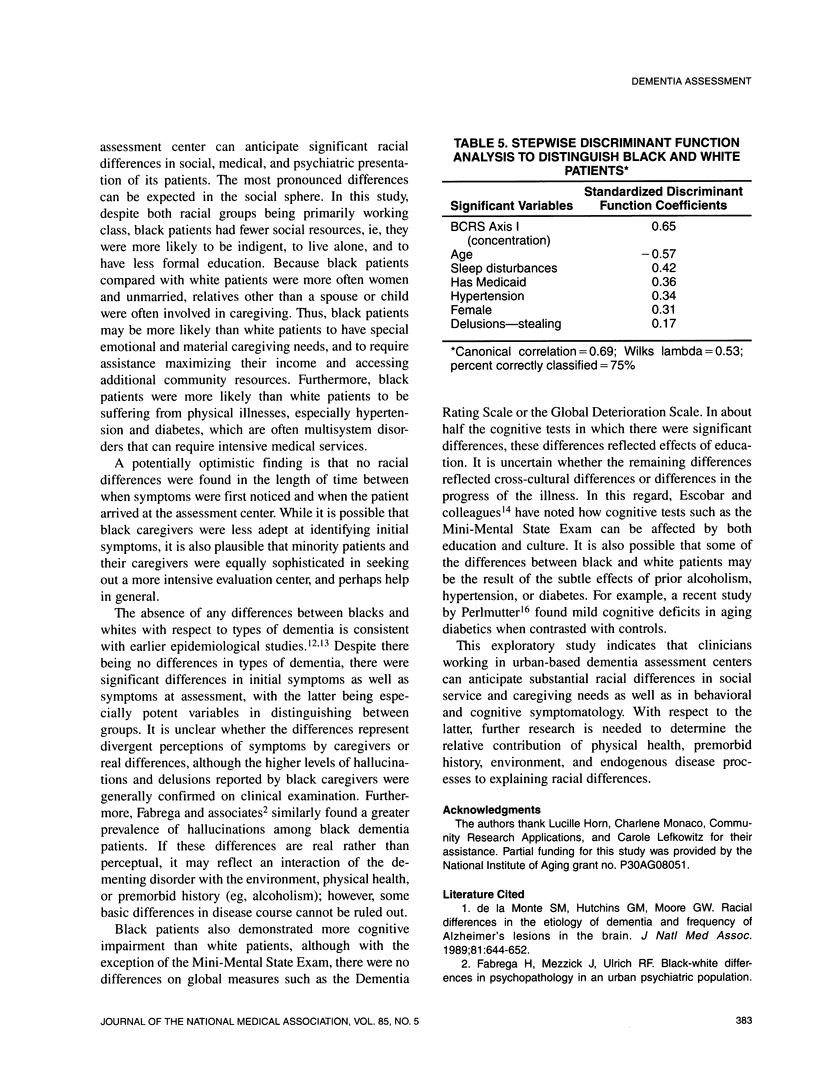
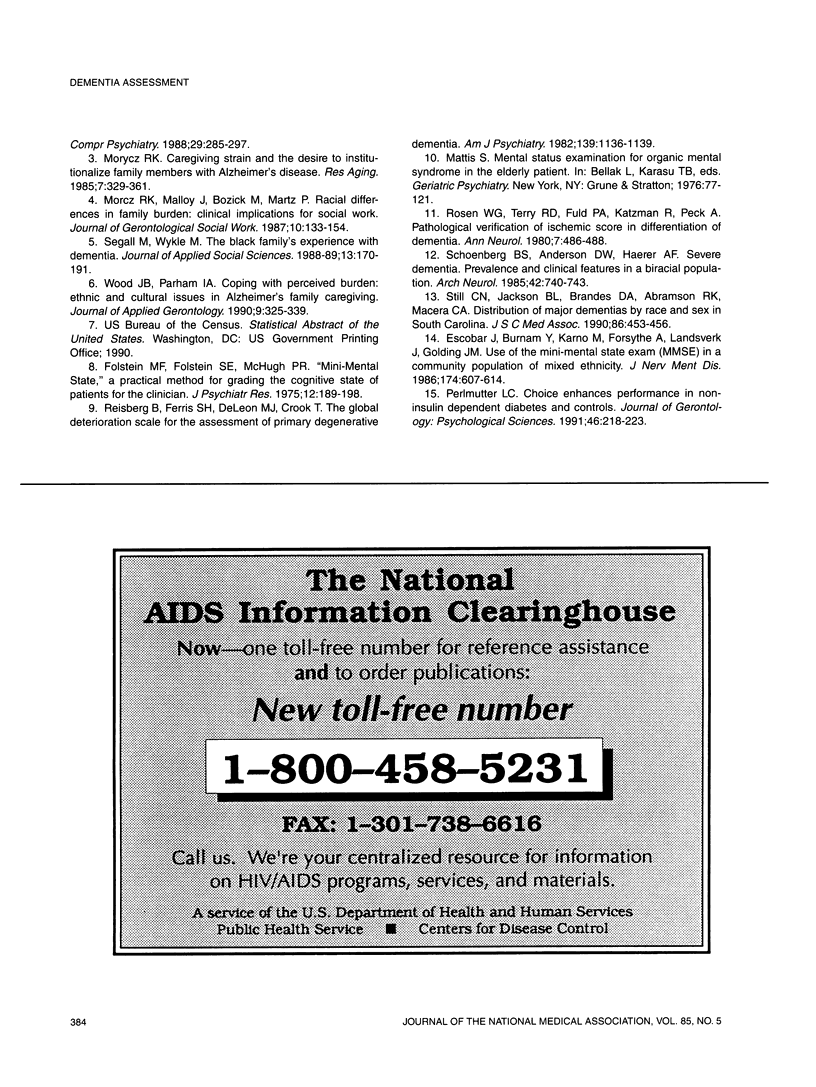
Selected References
These references are in PubMed. This may not be the complete list of references from this article.
- Escobar J. I., Burnam A., Karno M., Forsythe A., Landsverk J., Golding J. M. Use of the Mini-Mental State Examination (MMSE) in a community population of mixed ethnicity. Cultural and linguistic artifacts. J Nerv Ment Dis. 1986 Oct;174(10):607–614. doi: 10.1097/00005053-198610000-00005. [DOI] [PubMed] [Google Scholar]
- Folstein M. F., Folstein S. E., McHugh P. R. "Mini-mental state". A practical method for grading the cognitive state of patients for the clinician. J Psychiatr Res. 1975 Nov;12(3):189–198. doi: 10.1016/0022-3956(75)90026-6. [DOI] [PubMed] [Google Scholar]
- Mogul K. M. Overview: the sex of the therapist. Am J Psychiatry. 1982 Jan;139(1):1–11. doi: 10.1176/ajp.139.1.1. [DOI] [PubMed] [Google Scholar]
- Rosen W. G., Terry R. D., Fuld P. A., Katzman R., Peck A. Pathological verification of ischemic score in differentiation of dementias. Ann Neurol. 1980 May;7(5):486–488. doi: 10.1002/ana.410070516. [DOI] [PubMed] [Google Scholar]
- Still C. N., Jackson K. L., Brandes D. A., Abramson R. K., Macera C. A. Distribution of major dementias by race and sex in South Carolina. J S C Med Assoc. 1990 Aug;86(8):453–456. [PubMed] [Google Scholar]


